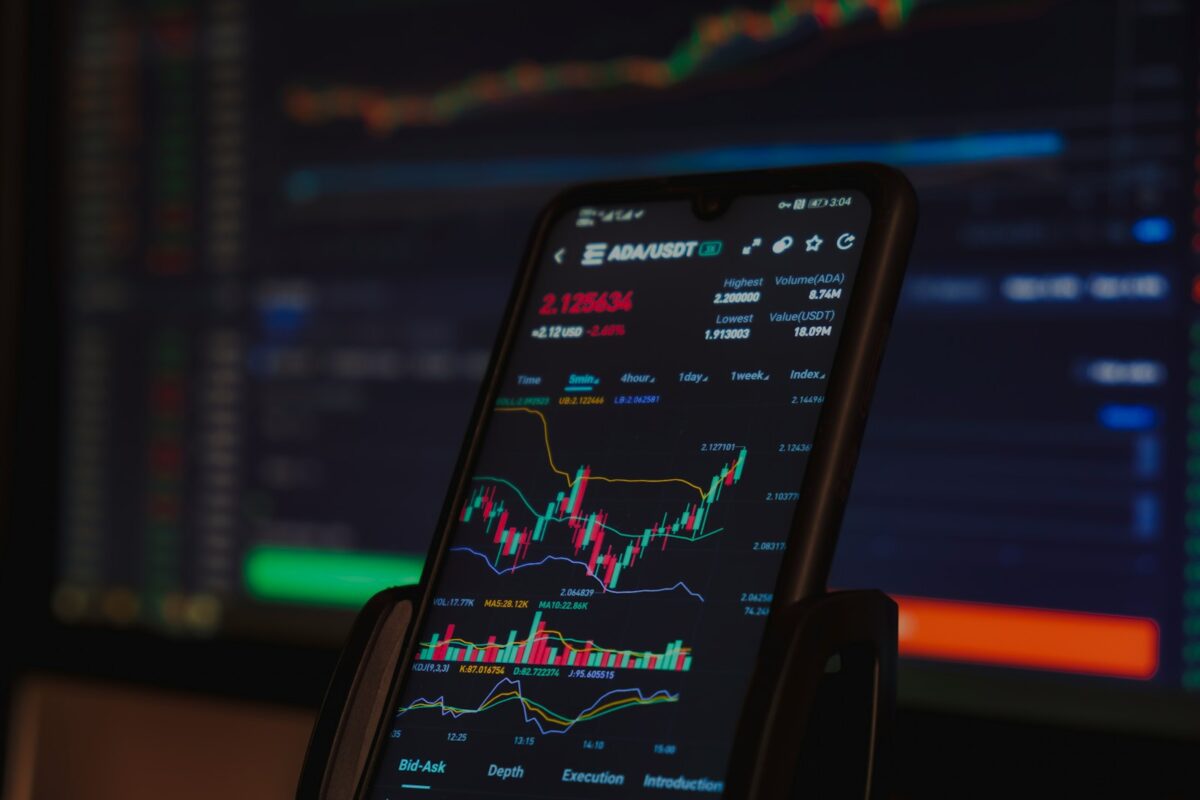
Staying updated crypto trends

Consistent examination of market shifts requires integration of advanced technology platforms that aggregate real-time news and data streams. Utilizing algorithm-driven analysis tools enables identification of emerging patterns before they solidify into dominant forces. This approach allows researchers to anticipate potential disruptions and adjust strategies accordingly.
Systematic research combining quantitative metrics with qualitative insights provides a clearer understanding of underlying causes behind price fluctuations and adoption rates. Applying multi-source verification reduces misinformation risk, which is critical when interpreting rapid developments in decentralized finance sectors.
Engagement with specialized forums and academic publications supplements direct observation by offering contextualized perspectives on technological advancements. Prioritizing sources that demonstrate rigorous methodology ensures access to credible updates, fostering a more accurate grasp of evolving mechanisms shaping the ecosystem.
How to Effectively Monitor Emerging Patterns in Blockchain and Digital Assets
To accurately track new movements within blockchain technology and digital asset markets, one must rely on rigorous research methodologies combined with real-time news aggregation from reputable sources. Platforms such as Glassnode provide on-chain analytics that reveal investor behavior patterns, while Coin Metrics offers detailed market data essential for discerning subtle shifts in asset flows. Integrating these datasets allows for a nuanced analysis beyond superficial price fluctuations.
Technological innovation constantly influences market dynamics; understanding protocol upgrades or the launch of decentralized finance (DeFi) projects requires continuous engagement with technical documentation and developer forums like GitHub. For example, Ethereum’s transition to proof-of-stake consensus through the Merge altered network energy consumption profiles and staking economics, directly impacting valuation models. Evaluating such breakthroughs demands a combination of empirical data review and scenario-based forecasting.
Strategies for Maintaining Awareness of Market Developments
A systematic approach involves establishing alert systems that monitor key indicators including transaction volume spikes, hash rate variations, and wallet activity concentration. Utilizing APIs from blockchain explorers enables automated data collection suited for algorithmic pattern recognition. This level of scrutiny assists in detecting early signs of market sentiment shifts driven by technological adaptations or regulatory announcements.
Diversification in information sources is equally critical: subscribing to specialized newsletters such as The Block or Delphi Digital supplements quantitative analysis with qualitative insights derived from expert interviews and project deep-dives. Academic publications focusing on cryptographic advancements or tokenomic design also contribute to a holistic grasp of evolving concepts shaping the ecosystem.
An experimental mindset encourages testing hypotheses through backtesting strategies against historical datasets. For instance, analyzing correlations between Layer 2 solution adoptions and network congestion metrics can validate assumptions about scalability improvements influencing user engagement rates. Such practical investigations refine predictive capabilities regarding which developments may catalyze significant market reactions.
The fusion of these methods facilitates an adaptable framework capable of responding to rapid shifts induced by emergent technologies like zero-knowledge proofs or cross-chain interoperability protocols. By cultivating an investigative approach grounded in verified data streams and scholarly discourse, one gains confidence in anticipating meaningful directional moves within the digital asset sphere.
Tracking Reliable News Sources
To maintain accuracy in the rapidly shifting blockchain environment, relying on verified news platforms that provide comprehensive analysis and meticulous research is indispensable. Platforms such as CoinDesk, The Block, and Messari offer detailed reports on market movements, technical upgrades, and protocol innovations supported by primary data and expert commentary.
Integration of academic publications alongside mainstream news sources enriches understanding of underlying technology advancements. Journals like Ledger and IEEE Access publish peer-reviewed studies focusing on consensus algorithms, cryptographic improvements, and scalability solutions that directly influence market behavior and investor decisions.
Evaluating Source Credibility Through Methodology
Assessing the reliability of information requires examining the editorial standards and fact-checking protocols implemented by a news outlet. For example, Bloomberg Crypto employs dedicated analysts who cross-verify data from blockchain explorers with official project announcements to prevent dissemination of inaccurate claims or speculative rumors.
Another effective approach involves subscribing to specialized newsletters curated by industry experts. Messari’s daily briefs include quantitative metrics such as on-chain transaction volumes and network hash rates combined with qualitative assessments of protocol governance changes, ensuring recipients receive multidimensional insights.
The dynamic nature of blockchain innovation demands continuous monitoring not only of price fluctuations but also technical updates like Ethereum’s transition from Proof-of-Work to Proof-of-Stake (Ethereum 2.0). Trusted sources often provide in-depth timelines and code audit summaries crucial for anticipating impacts on token valuation and network security.
- Utilize APIs from established data aggregators (e.g., Glassnode or Santiment) to automate real-time tracking of market indicators linked with news events.
- Cross-reference social media announcements with official Github repositories to validate development progress before reacting to potential market shifts.
- Engage with community forums such as Ethereum Magicians or BitcoinTalk where developers discuss protocol-level innovations transparently.
This multifaceted strategy enables comprehensive comprehension of blockchain developments while minimizing exposure to misinformation. A structured routine combining diverse reliable sources fosters informed decision-making rooted in robust technological understanding rather than speculation alone.
Using Crypto Market Tools
Utilizing advanced market tools is indispensable for conducting precise analysis of blockchain asset fluctuations and technological developments. Platforms such as Glassnode and Santiment provide on-chain data metrics, revealing investor behavior patterns and network health indicators. Access to real-time data streams enables researchers to identify shifts in market sentiment with scientific rigor, supporting informed decision-making that aligns with innovation trajectories within decentralized ecosystems.
Integration of algorithmic trading software combined with machine learning models offers a systematic approach to forecasting price movements by recognizing emergent patterns often invisible to manual examination. Tools like TensorTrade harness historical datasets and continuous feedback loops, enhancing predictive accuracy through iterative research cycles. Employing these computational resources fosters a deeper understanding of evolving economic signals tied closely to protocol upgrades and regulatory changes.
Technical Insights into Analytical Resources
Market scanners such as CoinGecko and Messari aggregate comprehensive news feeds alongside detailed project analytics, facilitating holistic observation of sector advancements. By cross-referencing multiple data sources, analysts can validate hypotheses regarding fundamental value shifts or technological breakthroughs. For instance, tracking Layer 2 solutions’ adoption rates through network activity charts elucidates scalability progress, while governance voting records shed light on community consensus trends.
The application of visualization frameworks–like Dune Analytics dashboards–enables experimental manipulation of raw blockchain data sets to uncover correlations between token distribution events and market liquidity variations. This approach invites iterative testing: How do smart contract upgrade announcements affect short-term volatility? What relationship exists between developer engagement metrics and asset performance? Such inquiries drive rigorous inquiry into the mechanics underpinning asset valuation within distributed ledger technology environments.
Joining Crypto Communities
Engagement in specialized blockchain communities significantly enhances the ability to access precise news and technical analysis related to cryptocurrency developments. Platforms such as Telegram channels, Discord servers, and Reddit forums host active discussions where members share real-time data on protocol upgrades, security audits, and network performance metrics. These environments provide unique opportunities for participants to observe innovation trajectories and evaluate emerging projects through collective insights.
Technical forums centered around decentralized finance (DeFi) or non-fungible tokens (NFTs) facilitate a deeper understanding of underlying algorithms and consensus mechanisms. By participating in these groups, one gains exposure to rigorous research reports and empirical case studies that document successful implementations or critical vulnerabilities. This interaction promotes an evidence-based approach to monitoring market shifts and technology adoption rates within various blockchain ecosystems.
Methods for Effective Community Participation
To maximize informational yield from community involvement, it is advisable to engage with channels dedicated to specific facets of blockchain technology–such as smart contract development, layer-2 scaling solutions, or interoperability protocols. Following curated newsletters and subscribing to analytical podcasts further supplements direct discourse by providing synthesized summaries of recent scientific findings and market dynamics.
The use of analytic tools integrated into community platforms can assist members in verifying claims through on-chain data exploration or statistical modeling. For example, integrating blockchain explorers or DeFi analytics dashboards enables users to cross-reference announcements with actual transaction volumes or liquidity pool changes. Such practices cultivate a disciplined methodology for distinguishing substantiated updates from speculative noise.
- Participate in AMA sessions with developers: These allow direct questioning about ongoing upgrades or future milestones grounded in technical roadmaps.
- Contribute to open-source project discussions: Reviewing pull requests and issue trackers fosters comprehension of development challenges and solutions.
- Join research-focused working groups: Collaborating on whitepapers or protocol improvement proposals sharpens analytical skills alongside peers.
Community membership also provides early access to pilot programs testing novel technological advancements like zero-knowledge proofs or cross-chain bridges. Observing experimental deployments firsthand encourages critical evaluation based on empirical results rather than marketing narratives. This experiential learning model supports continuous refinement of hypotheses concerning scalability enhancements or consensus algorithm efficiency.
An ongoing commitment to these interactive knowledge exchanges strengthens one’s ability to interpret complex datasets accurately and anticipate technological adoption curves. Through sustained dialogue coupled with methodical investigation, participants develop a nuanced perspective capable of discerning meaningful innovation from transient hype within the blockchain domain.
Conclusion: Optimizing Alerts and Notifications for Market Vigilance
Implementing precise alert systems tailored to specific blockchain innovations and market indicators enhances the agility of any analysis framework. By configuring notifications based on algorithmic triggers–such as sudden changes in token volatility, protocol upgrades, or shifts in network activity–professionals gain real-time insights into pivotal developments without information overload.
The integration of machine learning models that parse news sentiment alongside on-chain metrics exemplifies how technology can refine signal detection, filtering noise from meaningful patterns. This approach not only streamlines monitoring efforts but also supports proactive decision-making aligned with emerging patterns in asset behavior and ecosystem evolution.
Future Perspectives on Alerting Mechanisms
- Adaptive thresholds: Dynamic adjustment of alert parameters using reinforcement learning will allow systems to self-tune according to market regime changes, reducing false positives and enhancing relevance.
- Cross-source correlation: Combining decentralized oracle feeds with social media analytics can produce multifactorial alerts that capture nuanced shifts in sentiment and protocol-level events simultaneously.
- Integration with decentralized applications: Embedding notification protocols directly within smart contracts could enable automated responses to governance proposals or liquidity pool rebalancing, fostering more responsive ecosystems.
The ongoing fusion of technological progress with granular data analysis promises a future where stakeholders maintain continuous situational awareness through scalable and context-sensitive alert frameworks. Experimentation with hybrid data inputs and predictive modeling remains a fertile ground for advancing monitoring capabilities that align closely with market dynamics and innovation trajectories.


